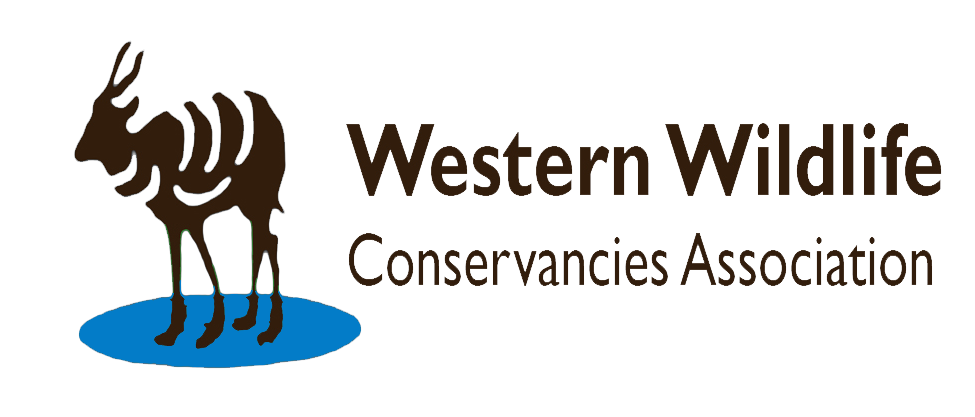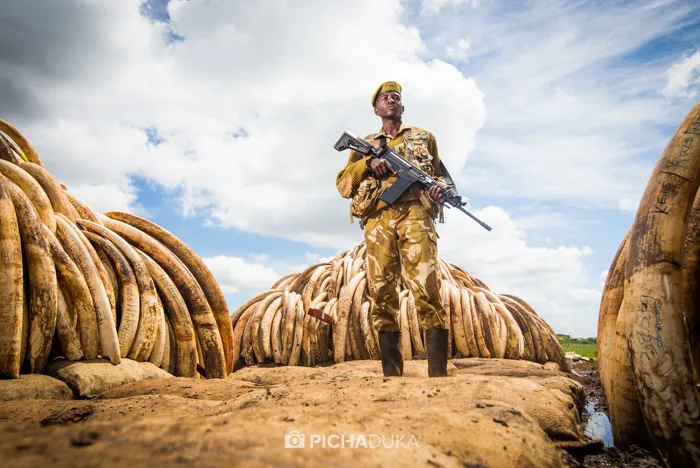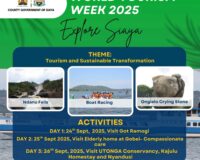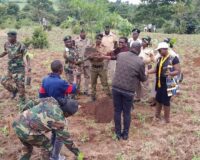The story of conservation in Kenya is a rich tapestry woven from various threads of history, culture, and faith. Among these, the contributions of the Friends Church (Quakers) and their early initiatives in Western Kenya stand out as pivotal. These efforts, which began in the early 20th century with the establishment of mission centers in Kaimosi, not only laid the foundation for local conservation but also contributed to the broader national movement that eventually led to the creation of the Kenya Wildlife Service (KWS).
Arrival of the Friends Church in Kaimosi
The Friends Church arrived in Kenya in 1902, establishing their first mission station in Kaimosi, located in the lush and verdant Nandi Hills. Their mission was initially centered on evangelism, education, and healthcare, but they soon recognized the pressing need to address environmental degradation, which was becoming an issue for the local communities.
Kaimosi, known for its dense forests and abundant wildlife, was an area of great natural beauty. However, deforestation and land degradation were beginning to threaten this fragile ecosystem. The Quakers, with their deep respect for nature and commitment to community well-being, initiated several projects aimed at environmental conservation.
The Lord’s Acre Project: A Foundation for Conservation
In the 1940s, the Friends Church launched the Lord’s Acre Project, one of their earliest and most influential conservation initiatives. Based on a biblical concept, the project encouraged local communities to set aside a portion of their land for God, which in practice meant managing it sustainably to prevent soil erosion, promote reforestation, and support sustainable agriculture.
This project was significant not only for its environmental impact but also for its role in instilling a conservation ethic among the local population. The Quakers integrated teachings on environmental stewardship into their broader educational programs, ensuring that these values were passed down through generations. The Lord’s Acre Project became a model for community-based conservation, emphasizing the need to balance human needs with the preservation of the natural environment.
The Broader National Conservation Movement and the Role of the Quakers
As the Quakers expanded their mission throughout Western Kenya, their conservation efforts began to attract attention beyond the local communities. The success of the Lord’s Acre Project and the sustainable practices promoted by the Friends Church caught the eye of early conservationists and government officials who were beginning to consider the broader environmental challenges facing Kenya.
In the 1940s and 1950s, Kenya was undergoing significant changes, with increasing concerns about the impact of human activities on the country’s wildlife and natural habitats. The colonial government began to establish game reserves and national parks as a way to protect wildlife, but these efforts were often top-down and did not fully engage local communities.
The Friends Church, with its grassroots approach to conservation, provided a different model—one that emphasized community involvement and sustainable use of natural resources. The Quakers’ work in Kaimosi and other parts of Western Kenya demonstrated that effective conservation could not be achieved without the active participation and support of local people. This approach influenced early discussions on the need for a national body to oversee wildlife conservation, which eventually led to the formation of the Kenya Wildlife Service.
The Formation of the Kenya Wildlife Service
In 1989, the Kenya Wildlife Service (KWS) was officially established by the Kenyan government to manage and protect the country’s wildlife and natural resources. The creation of KWS was a response to the growing threats to Kenya’s wildlife, including poaching, habitat loss, and human-wildlife conflicts.
The Quaker Church, through its early conservation efforts, played an indirect but important role in the formation of KWS. The principles of community involvement and sustainable resource management championed by the Friends Church were reflected in the new organization’s approach to conservation. KWS adopted a more inclusive strategy that recognized the importance of involving local communities in conservation efforts—a strategy that had been pioneered by the Quakers decades earlier.
The Quakers’ Contribution to KWS and National Conservation Efforts
While the Quakers were not directly involved in the formation of KWS, their early conservation initiatives helped shape the broader national dialogue on environmental stewardship. The success of projects like the Lord’s Acre in promoting sustainable land use and community-based conservation provided valuable lessons that were incorporated into KWS’s strategies.
Moreover, the Quaker Church continued to support conservation efforts in Kenya through partnerships with KWS and other organizations. They played a role in advocating for the protection of natural habitats, promoting environmental education, and supporting community-led conservation initiatives. This ongoing commitment to conservation helped to bolster KWS’s efforts and ensured that the principles of environmental stewardship remained central to Kenya’s national conservation strategy.
The Role of Kaimosi Mission Wildlife Conservancies
Over the decades, the conservation initiatives launched by the Quakers at Kaimosi Mission grew into a network of community-led wildlife conservancies. These conservancies were established by local communities who had been inspired by the teachings and practices of the Friends Church. They focused on protecting the region’s rich biodiversity, which included important forest ecosystems, water catchment areas, and a variety of wildlife species.
By the early 2000s, these conservancies had gained significant traction, attracting the attention of other conservation-minded individuals and communities in Western Kenya. The conservancies served as models for sustainable land management and community-based conservation, demonstrating that local people could play a central role in preserving their natural heritage.
The Passage of the 2013 Wildlife Act
In 2013, the Kenyan government passed the Wildlife Conservation and Management Act, a landmark piece of legislation that aimed to modernize the country’s approach to wildlife conservation. The Act recognized the critical role of community conservancies in protecting Kenya’s wildlife and ecosystems and provided a legal framework for their establishment and management.
One of the key provisions of the Act was the creation of regional conservation associations, which would bring together individual conservancies to coordinate efforts, share resources, and advocate for stronger conservation policies. This move was designed to ensure that conservation efforts were more effective and that local communities were more deeply involved in managing their natural resources.
Formation of the Western Wildlife Conservancies Association (WWCA)
In response to the 2013 Wildlife Act, conservancies in Western Kenya, in 2014, these conservancies came together with other like-minded individuals and communities to establish the Western Wildlife Conservancies Association (WWCA). The formation of WWCA was a significant milestone in the region’s conservation history, as it marked the first time that multiple conservancies in Western Kenya had united under a common umbrella to pursue shared goals.
WWCA was established as one of 12 regional associations under the Kenya Wildlife Conservancies Association (KWCA), the national umbrella body for conservancies in Kenya. KWCA was created to coordinate the activities of regional conservancies, advocate for their interests at the national level, and ensure that the provisions of the Wildlife Act were effectively implemented across the country.
WWCA’s Role and Achievements
Since its establishment, WWCA has played a crucial role in advancing conservation efforts in Western Kenya. The association has focused on protecting key wildlife habitats, addressing human-wildlife conflicts, and promoting sustainable livelihoods for local communities. It has also worked to strengthen the capacity of its member conservancies, providing them with the resources and support they need to manage their areas effectively.
WWCA’s work has been deeply influenced by the principles of community-based conservation. The association continues to prioritize the involvement of local communities in all aspects of conservation, recognizing that the long-term success of these efforts depends on the active participation and support of the people who live in and around the conservancies.
Through its affiliation with KWCA, WWCA has also been able to contribute to national conservation policies and initiatives. The association has advocated for stronger protections for wildlife and natural habitats, and has worked to ensure that the voices of local communities are heard in discussions about Kenya’s conservation future.
Conclusion: A Legacy of Conservation and Collaboration
The formation of the Western Wildlife Conservancies Association in 2014 was a significant development in Kenya’s conservation history. By bringing together like-minded individuals and communities, WWCA has created a powerful platform for advancing conservation in Western Kenya, building on the strong foundations.
Their collaborative efforts continue to protect Kenya’s rich biodiversity, ensuring that future generations can enjoy the country’s natural heritage. As one of the 12 regional associations under KWCA, WWCA plays a vital role in the national conservation landscape, demonstrating the enduring impact of community-based conservation and the power of collective action.
The principles of community-based conservation and sustainable resource management pioneered by the Friends Church continue to resonate in the work of the Kenya Wildlife Service and other conservation organizations. The legacy of the Quakers’ early conservation efforts lives on in the continued protection of Kenya’s natural heritage, ensuring that future generations can enjoy the country’s rich biodiversity.
WWCA was established as one of 12 regional associations under the Kenya Wildlife Conservancies Association (KWCA), the national umbrella body for conservancies in Kenya. KWCA was created to coordinate the activities of regional conservancies, advocate for their interests at the national level, and ensure that the provisions of the Wildlife Act were effectively implemented across the country.






